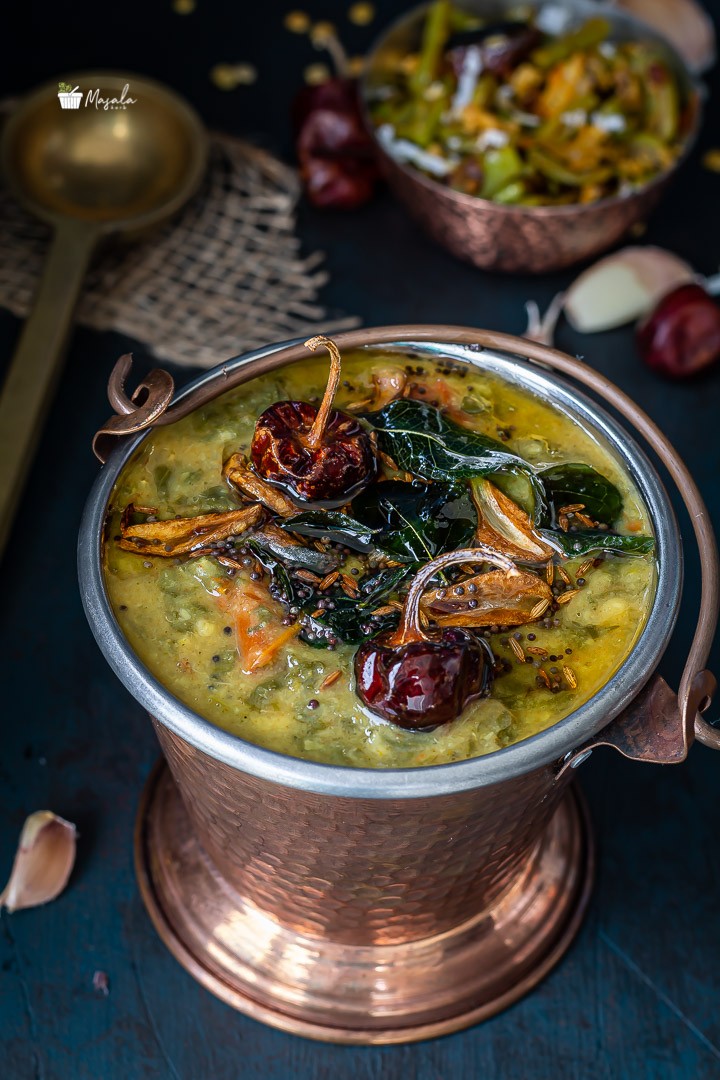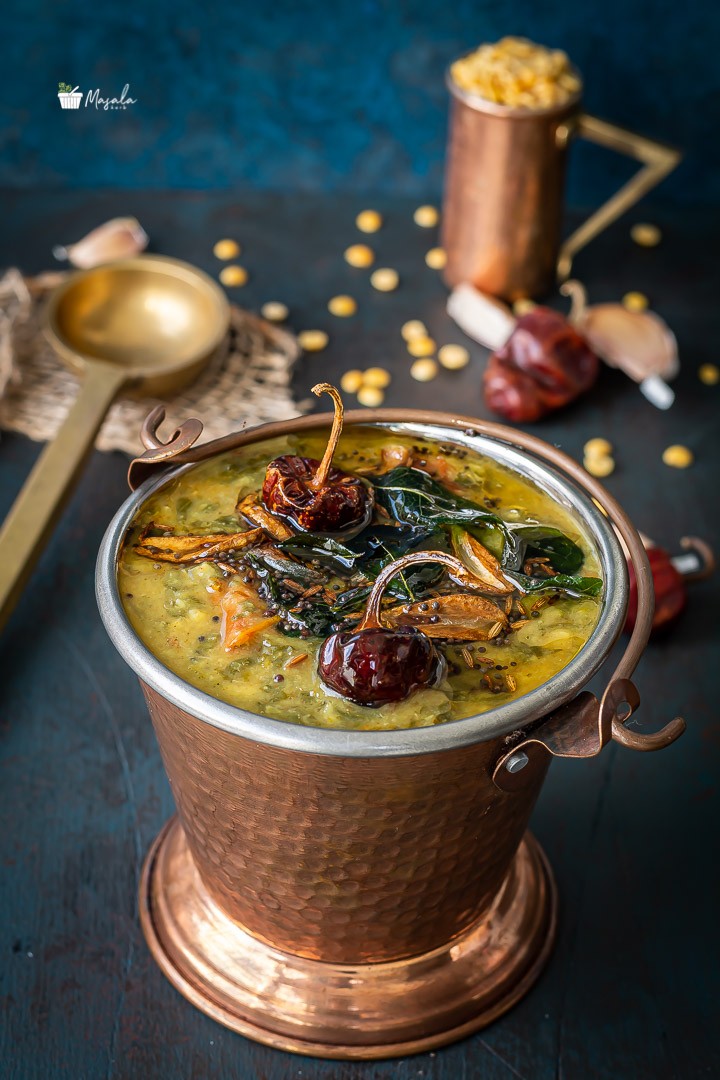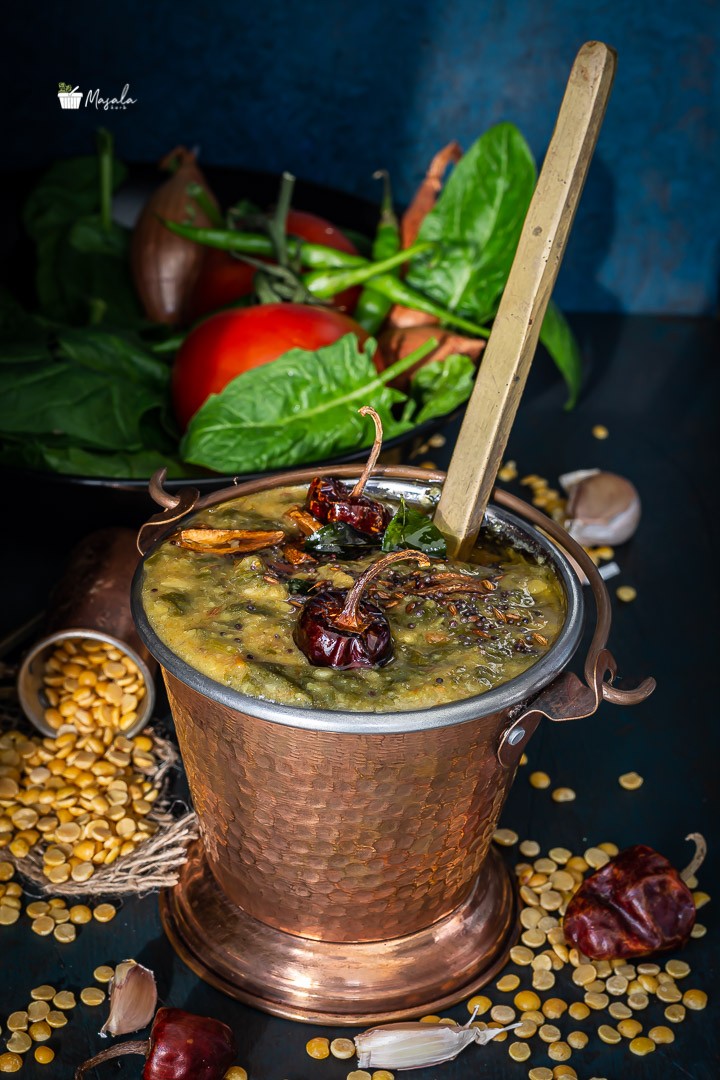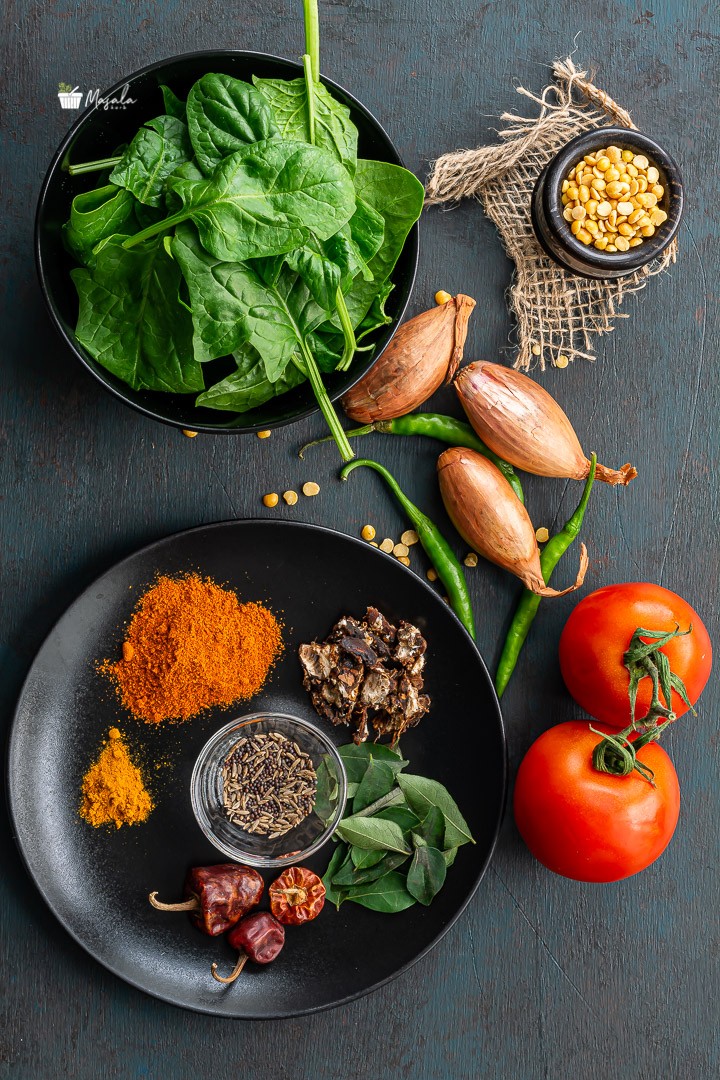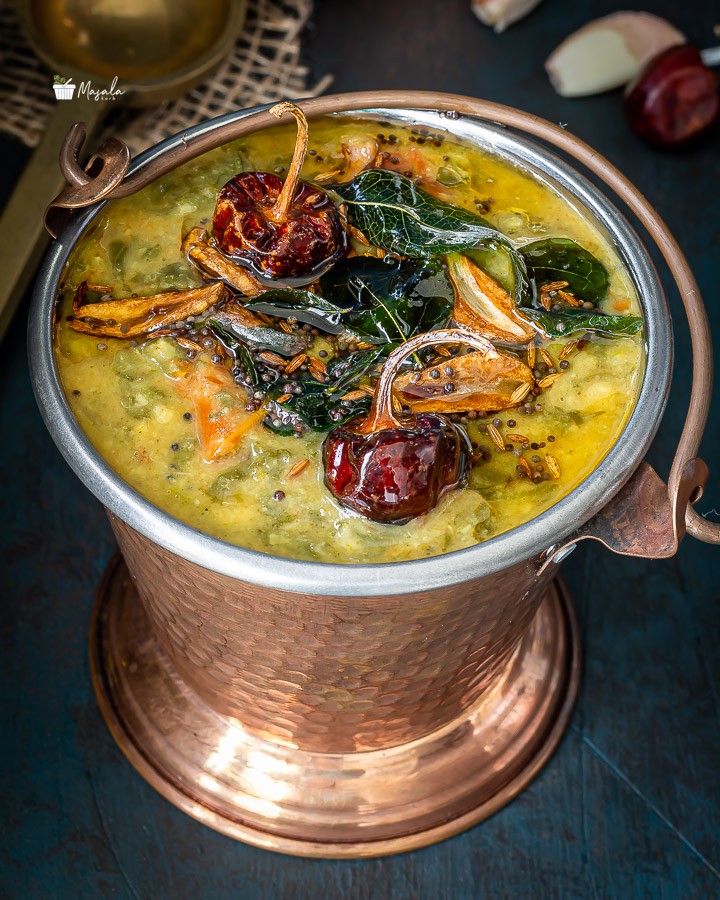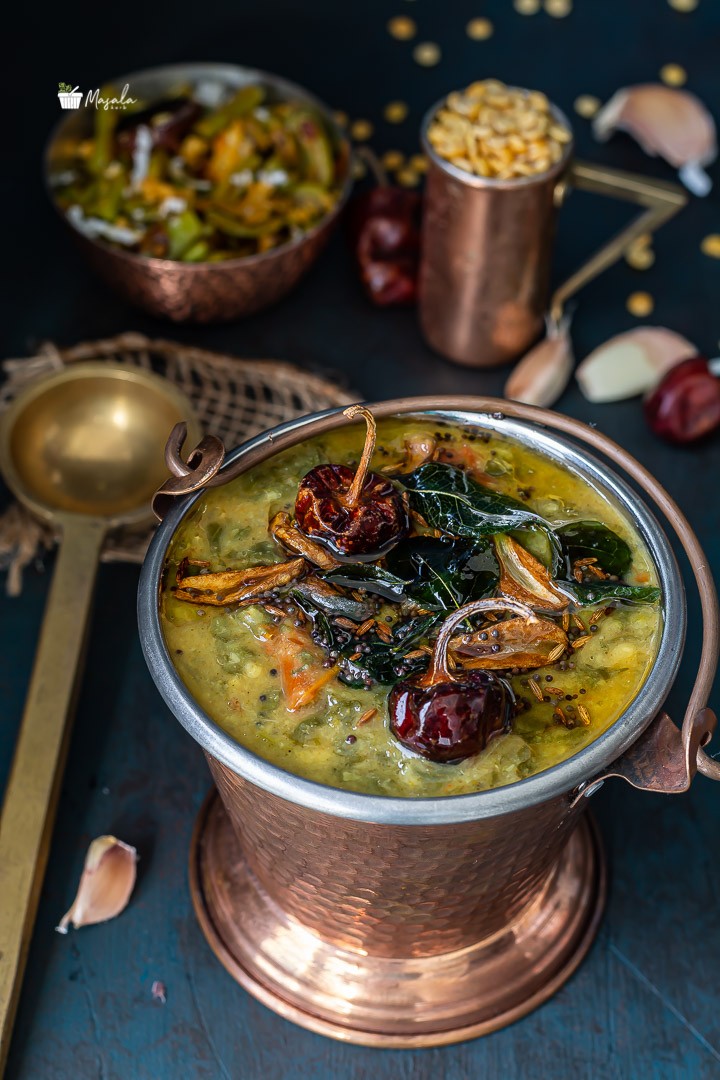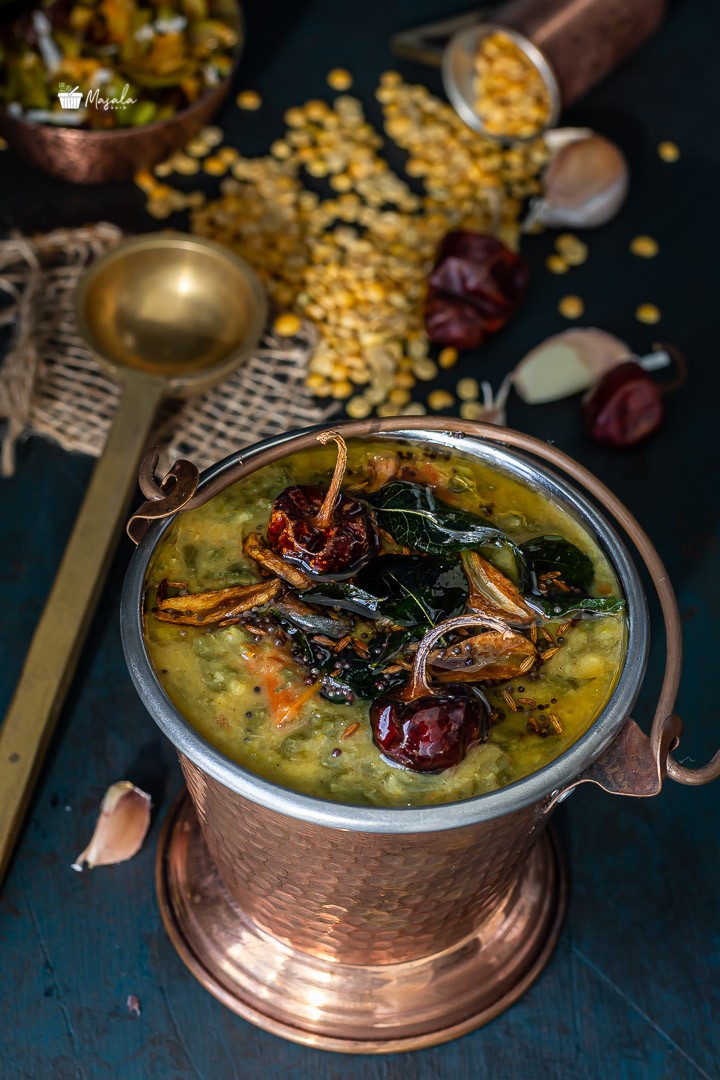Ultimate comfort food any day is a bowl of hot Rice & dal with a dollop of ghee. Palakura Pappu Andhra Style | Spinach Dal | Palak Dal is one such simple recipe prepared with spinach. It’s packed with protein, healthy and you’ll appreciate preparing it due to the fact it’s so easy & quick that anybody can cook it without going wrong.
Editor’s note: This post was originally published in April 2017 and has been updated with Video and replaced with better edited pictures for comprehensiveness and freshness.
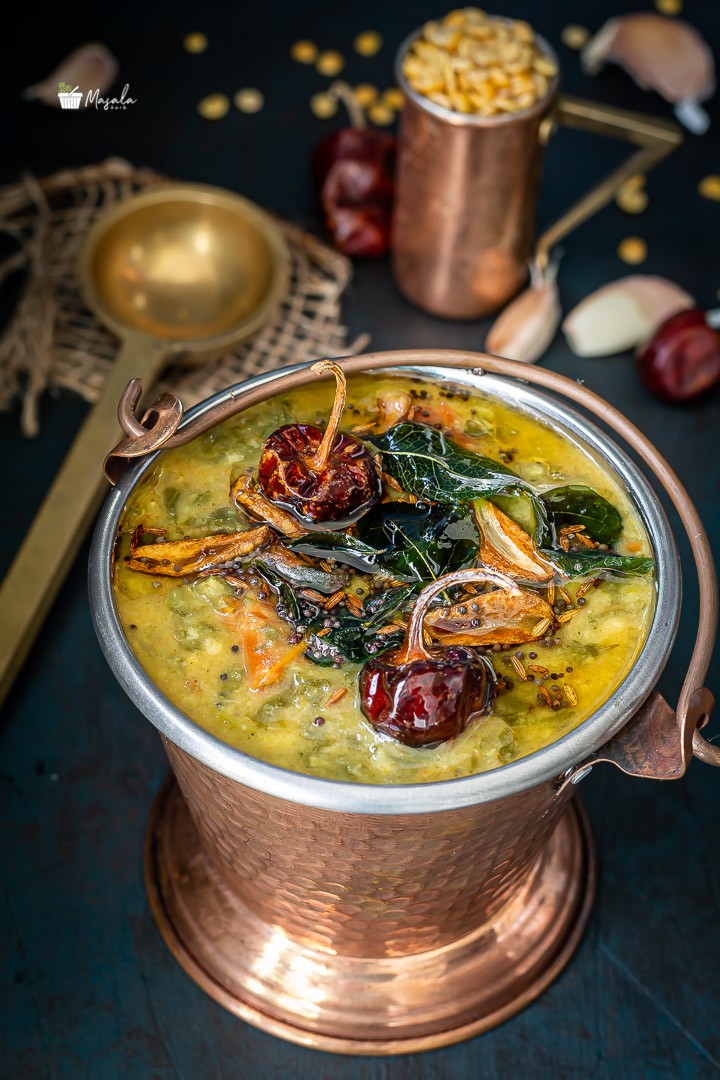 “Pappu” (in telugu) translates to “cooked lentils”, which has an exclusive place in South Indian Meals tradition, particularly in the Andhra Menu. Palakura Pappu Andhra Style is one such dish that is the most in-demand comforting and satisfying meals.
“Pappu” (in telugu) translates to “cooked lentils”, which has an exclusive place in South Indian Meals tradition, particularly in the Andhra Menu. Palakura Pappu Andhra Style is one such dish that is the most in-demand comforting and satisfying meals.
Everybody has their very own form of this recipe. Like most of the Indian recipes, this is also extremely flexible. It is prepared in different ways with various lentils as well as spices based on the region where it’s cooked.
Health Benefits of Spinach:
Spinach is an excellent source of vitamin K, vitamin A, vitamin C and folic acid as well as being a good source of manganese, magnesium, iron and vitamin B2. Vitamin K is important for maintaining bone health. It is well known for its nutritional qualities and has always been regarded as a plant with remarkable abilities to restore energy, increase vitality and improve the quality of the blood. Lentils are loved by vegetarians and vegans because they are a great high-protein food, are rich in nutrients and have a hearty, dense texture. Hence, they are a great way to dial up the protein in your diet without breaking the bank — they are the most affordable vegetarian protein sources for many who follow a vegetarian diet.
Lentils cooked with greens is a very good combination. If you manage to make it at least once a week, you are able to have very simple and nutritious meal. Hot rice and spinach dal make probably the most comforting and satisfying combo. It is an easy fix recipe for the days when you would prefer cooking a single dish rather than the whole spread.
Off to Palakura Pappu Andhra Style!!
Easy Steps to make
Palakura Pappu Andhra Style:
Ingredients Needed:
- First, clean spinach and wash under running water with 2 to 3 exchanges of water.
- Finely chop spinach leaves and set aside.
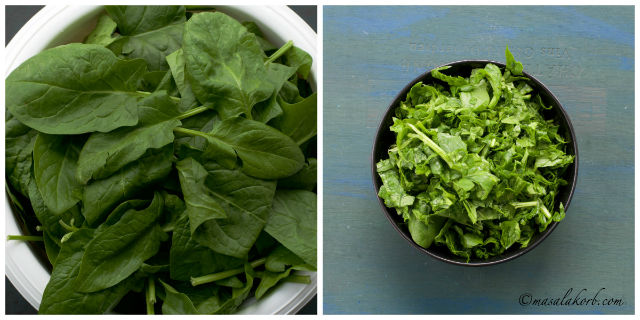
- Wash lentils (toor dal/kandhi pappu/thoram paruppu) directly in the pressure cooker, which you are going to use to cook this dal.
- Add 2 to 2½ cups water and ¼ teaspoon turmeric powder.
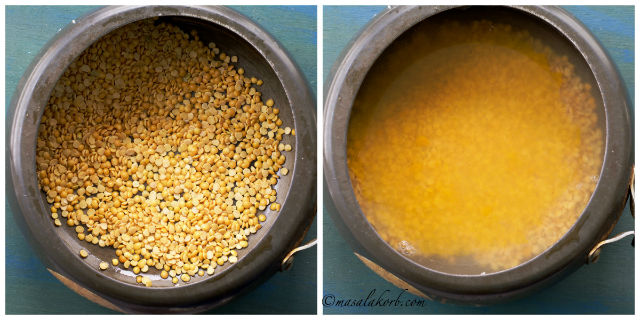
- Roughly chop onions into big chunks, slit green chillies and add to the lentils.
- Now add chopped spinach and spread evenly over the lentils.
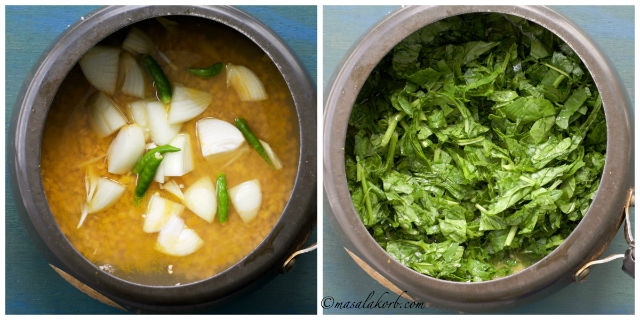
- In a separate bowl (pressure cooker safe), add tamarind, red chilli powder and roughly chopped tomato pieces.
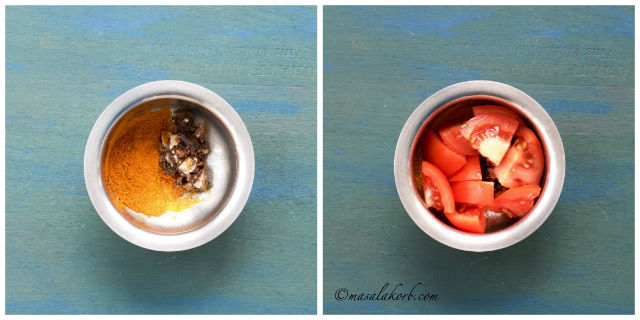
Pressure Cook Dal:
- Place this bowl with tomatoes over the spinach. (basically this bowl should be smaller and fit into the cooker with dal).
- Close the lid and pressure cook for 3 whistles over high heat and then simmer to low for 5 minutes. Turn off the heat.
- Open the pressure cooker once the pressure subsides.
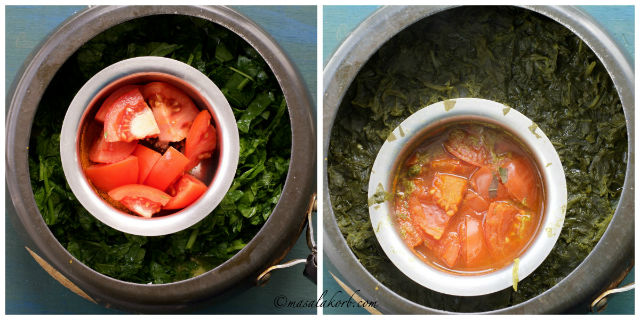
- Mash the contents in the bowl with tomatoes first and then transfer it to the spinach dal.
- Now mash up everything together. Add a little sugar, required salt and water to get the desired consistency, whether thick or runny. In case you leave it as such with out adding extra water, then skip the next step.
- In case you add water, then bring the contents to a boil over medium heat with constant stirring for 2 to 3 minutes and turn off the heat. Make sure the dal does not stick to the bottom, otherwise you get a burnt taste.
- Transfer dal to a serving bowl.
Tempering/ Tadka to Dal:
- Grab all the required ingredients for the tempering. Crush or chop garlic pods.
- Heat oil or ghee in a small pan over medium heat. (I’m using oil)
- When oil is hot enough, add garlic. Once garlic starts to turn light brown add red chillies, mustard seeds and cumin seeds. When mustard seeds splutter, add a pinch of asafoetida. Turn off the hat and add curry leaves. Transfer the tempering to the dal and mix well.
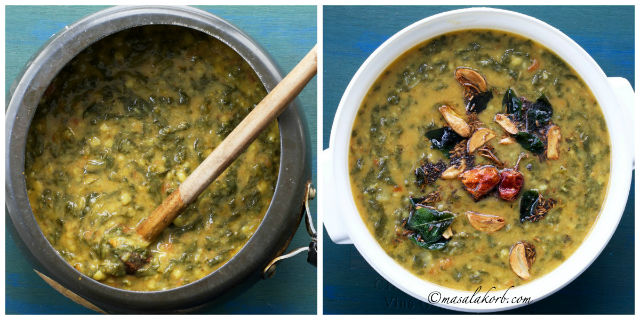
- Serve Palakura Pappu Andhra Style with rice along with a drizzle of ghee (clarified butter) over it. You can also serve with roti or paratha.
- It pairs well with any stir fry like Potato fry, Stuffed okra, Eggplant stir fry, Bhindi fry, Arbi fry, and the non-veg lovers can try it with Chicken fry or Masala Egg fry.
- Today, I’m serving with Avarakkai Poriyal.
STOVE TOP METHOD TO MAKE PALAK DAL:
In case you want to make this dal without a pressure cooker, then soak lentils for at least half an hour. Add 4 to 5 cups of water to the lentils along with turmeric and cook covered over medium heat till they become soft. Then add onions and green chillies, followed by tomato, red chilli powder and tamarind extract. Finally, add spinach leaves and boil till they are cooked. Add a little sugar, required salt and mix well. The lentils and all the other ingredients should blend well. If required add some more water while cooking. Cook in a deep pot because lentils tend to froth while cooking. If the mixture froths up, remove the lid and cook. Finally turn off the heat. For the tempering, follow the pressure cooker method.
Palakura Pappu Andhra Style | Easy Spinach Dal | Palak dal South Indian Style
Ingredients
- 1 Cup Toor dal/ Pigeon peas Kandhi Pappu
- ½ tsp Turmeric powder
- 1 Medium Onion chopped
- 3 green chillies slit lengthwise
- 3 Cups Spinach Washed & Roughly chopped(tightly packed)
- 1½ tsp Red Chilli Powder
- Gooseberry size Tamarind
- 1 Tomato Roughly chopped
- ½ tsp Sugar
- Salt to taste
For Tempering:
- 2 tsp Oil or Ghee
- 4 Garlic Pods Crushed or Chopped
- ½ tsp Mustard Seeds
- 1 tsp Cumin Seeds
- 2 Dry Red Chillies
- ½ teaspoon Asafoetida
- Few Curry Leaves
Instructions
- Wash lentils in the pressure cooker.
- Add 2½ to 3 cups water, turmeric powder, chopped onions, slit green chillies and chopped spinach.
- In a separate bowl, add tamarind, red chilli powder and roughly chopped tomato pieces.
- Place this bowl with tomatoes over the spinach.
- Close the lid and pressure cook for 3 whistles over high heat and then simmer to low for 5 minutes. Turn off the heat.
- Open the pressure cooker once the pressure subsides.
- Now mash up everything together. Add sugar, required salt and water to get the desired consistency.
- Bring the contents to a boil over medium heat with constant stirring for 2 to 3 minutes and turn off the heat.
- Transfer dal to a serving bowl.
For Tempering:
- Heat oil or ghee in a small pan over medium heat. When oil is hot enough, add garlic. Once garlic starts to turn light brown add red chillies, mustard seeds and cumin seeds. When mustard seeds splutter, add a pinch of asafoetida. Turn off the heat and add curry leaves. Transfer the tempering to the dal and mix well.
Recipe Video
Notes
- This recipe can be easily made with any type of greens.
- Traditionally, we use for tamarind sourness, but you can replace it with lime juice. Add it towards the end after the dal cools down. Otherwise, you get a bitter taste.
- Adjust spice levels with green chillies and red chilli powder to suit your taste.
- Pressure-cooking dal saves time and retains nutrients.
- Addition of sugar helps to balance out salt and sour flavours in a dish.
- While cooking dal in a pressure cooker, do not bring tomatoes and tamarind (sour ingredients) in contact with lentils, otherwise the dal will not cook properly.
Check out other Lentil Recipes and Andhra Recipes from blog!!
Many more to come!!…..STAY TUNED!!
Hungry for more? Never miss a recipe!!…Subscribe to MasalaKorb and have posts delivered straight to your inbox! And connect with me on Facebook, Google, Twitter, Instagram and Pinterest for all of the latest updates.
Did you make a recipe? Make sure to tag your photo with this hashtag: #masalakorb
Happy Cooking
Cheers!!
Padma.

